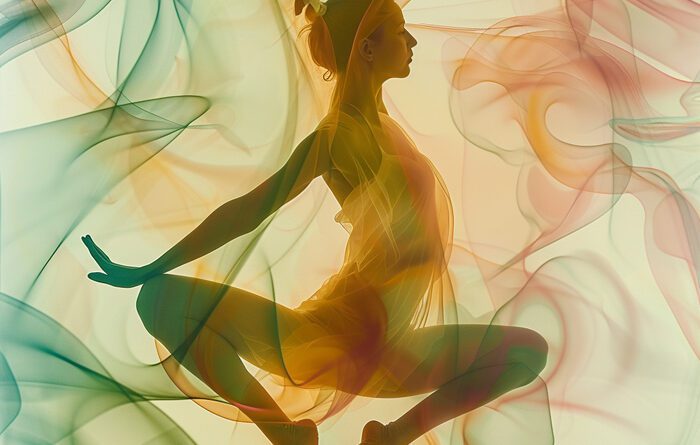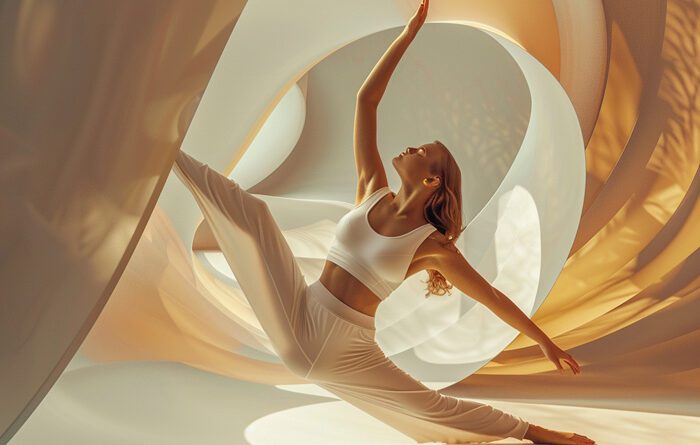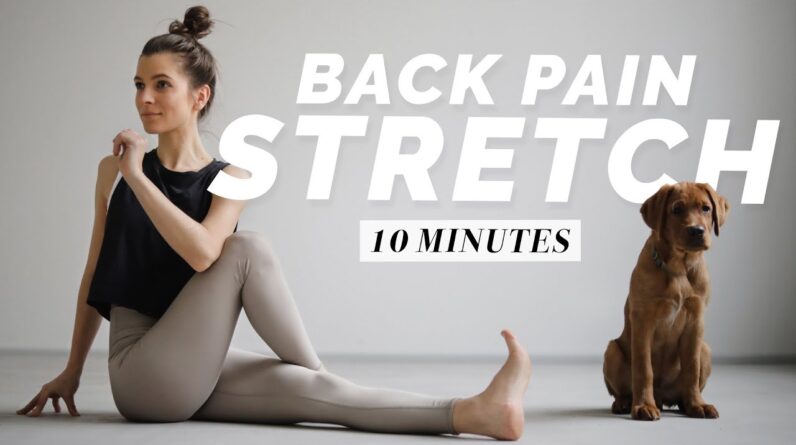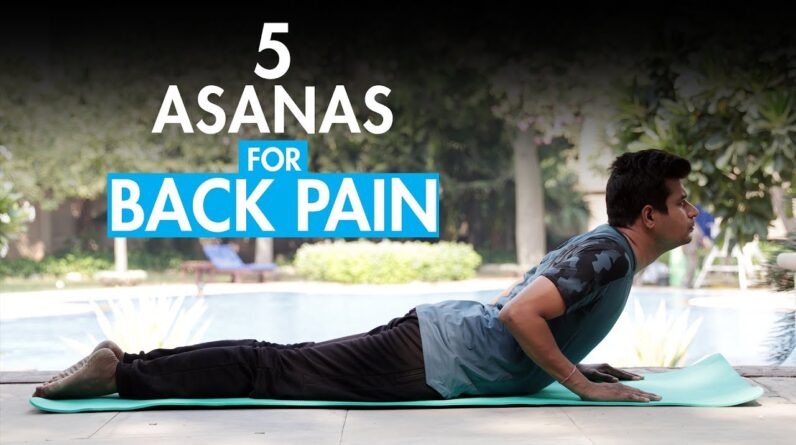Embarking on a yoga journey can be a transformative experience, especially if you’re grappling with anxiety. “Yoga For Beginners With Anxiety” is crafted with you in mind, offering a guiding hand through the world of yoga, making it accessible and comforting. Imagine stepping into a space where each breath and movement is a step toward tranquility, where the practice is tailored to soothe your anxious mind and bolster your journey towards inner peace. This article is your friendly companion, eager to introduce you to the basics of yoga, ensuring you feel supported and understood as you begin this life-enhancing journey.
Understanding Anxiety and Yoga
The science behind anxiety
Anxiety is your body’s natural response to stress. It’s a feeling of fear or apprehension about what’s to come. Whether it’s your first day at a new job, a speech, or meeting new people, these scenarios can spike your anxiety. From a scientific standpoint, anxiety triggers your fight-or-flight response, leading to increased heart rate, rapid breathing, and high blood pressure. It’s your body’s way of preparing to confront or avoid danger.
How yoga affects the mind and body
Yoga is a mind-body practice that combines physical postures, breathing exercises, meditation, and relaxation techniques. It impacts the mind and body by stimulating the parasympathetic nervous system – the part of your autonomic nervous system that oversees relaxation responses. Through yoga, you can lower your heart rate, decrease blood pressure, and reduce cortisol levels, which are all beneficial for calming the mind and reducing anxiety levels.
The connection between yoga and mental health
Yoga’s connection to mental health is profound. It offers a holistic way to manage anxiety and stress by encouraging relaxation, improving self-awareness, and fostering a sense of peace and well-being. Regular practice of yoga can lead to significant improvements in mental health, including reductions in anxiety, depression, and stress. By focusing on the present moment and maintaining a state of mindfulness, yoga helps you break away from negative thought patterns that contribute to anxiety.
Benefits of Yoga for Anxiety
Reducing stress and promoting relaxation
One of the most immediate benefits of yoga is its ability to promote relaxation and reduce stress. Through calming breathing exercises and gentle movements, yoga helps release tension from the body. As you become more adept at these techniques, you’ll find it easier to relax in stressful situations, significantly reducing your overall anxiety levels.
Improving mood and energy levels
Yoga is also incredibly effective at boosting your mood and energy levels. The combination of physical activity, deep breathing, and meditation can release endorphins, the hormones responsible for feelings of happiness and euphoria. Over time, regular yoga practice can lead to an overall improvement in your mood and a significant reduction in symptoms of anxiety and depression.
Enhancing focus and mindfulness
Practicing yoga encourages you to stay in the moment and maintain a state of mindfulness. By concentrating on your breathing and the movements of your body, you can enhance your focus and attention. This mindfulness can easily translate into your daily life, helping you to remain present and engaged, rather than overwhelmed by anxiety.
Getting Started with Yoga
Choosing the right type of yoga for anxiety
When starting with yoga, it’s important to choose a style that aligns with your goal of managing anxiety. Gentle yoga styles like Hatha, Yin, or Restorative yoga are excellent choices as they focus more on relaxation and meditation. These styles use slower movements and longer holds in poses, giving you time to relax into each position and focus on your breathing.
Creating a comfortable space for practice
Creating a comfortable and inviting space is crucial for a fulfilling yoga practice. Choose a quiet, clutter-free area in your home where you can practice without distractions. You might want to add items that enhance relaxation, such as a yoga mat, cushions, soft lighting, or even aromatherapy candles.
Finding resources and guides for beginners
There are countless resources available for beginners new to yoga. From online videos and tutorials to books and local classes, you have plenty of options to start your journey. Look for beginner-friendly content that focuses on easing anxiety. Remember that everyone’s journey is unique, so what works for others might not work for you. Be patient and explore different resources until you find what suits you best.
Basic Yoga Poses for Anxiety Relief
Child’s Pose (Balasana)
Child’s Pose is a restful posture that can help soothe the nervous system and release tension in the back, shoulders, and neck. It promotes a sense of safety and comfort, making it effective for reducing anxiety.
Tree Pose (Vrikshasana)
Tree Pose helps improve focus and concentration, which can be beneficial if you’re dealing with anxiety. By promoting balance and stability, Tree Pose encourages a sense of grounding and present-mindedness.
Warrior II (Virabhadrasana II)
Warrior II is a powerful stance that builds confidence and strength. It helps combat anxiety by fostering an increased sense of power and control. This pose also helps open up the chest and shoulders, areas where we often hold tension.
Breathing Techniques for Anxiety
Deep breathing basics
Deep breathing is a fundamental technique in managing anxiety. It helps activate the body’s relaxation response, reducing stress and anxiety. Focus on taking slow, deep breaths in through your nose, allowing your chest and lower belly to rise as you fill your lungs with air. Then, exhale slowly through your mouth or nose.
Ujjayi Breath (Victorious Breath)
Ujjayi Breath is a soothing breathing technique used in yoga. By slightly constricting the back of your throat to create a gentle hissing sound with each breath, you can enhance your focus and calm your mind, significantly reducing feelings of anxiety.
Alternate Nostril Breathing (Nadi Shodhana)
This breathing technique is known for its ability to relax the mind and balance the left and right hemispheres of the brain. It involves gently closing one nostril while breathing through the other and then switching. This pattern helps to calm an agitated mind and reduce anxiety.
Incorporating Mindfulness and Meditation
Understanding mindfulness in yoga
Mindfulness in yoga involves paying close attention to your physical sensations, thoughts, and emotions as you practice. It can teach you to observe your anxiety without judgment, helping to reduce its impact on your life.
Simple meditation techniques for beginners
Simple meditation techniques, such as focusing on your breath or repeating a calming mantra, can be easily incorporated into your yoga practice. These techniques help center your mind and reduce anxiety by promoting a state of calm and focused attention.
Integrating mindfulness into daily life
Incorporating mindfulness into your daily life can magnify the benefits of your yoga practice. Try to maintain the same level of awareness and presence you achieve during yoga throughout your day. Whether you’re eating, working, or engaging with others, mindfulness can help reduce anxiety and improve your overall well-being.
Creating a Yoga Routine for Anxiety Management
Setting realistic goals and expectations
When creating a yoga routine, it’s important to set realistic goals and expectations. Start with shorter, more manageable sessions and gradually increase the duration and frequency of your practice as your comfort level grows. Remember, the goal is to reduce anxiety, not add to it by setting unrealistic expectations for yourself.
Developing a regular yoga practice
Consistency is key to experiencing the full benefits of yoga for anxiety relief. Try to incorporate yoga into your daily routine, even if it’s just a few minutes each day. Over time, this regular practice can significantly reduce your anxiety levels.
Adjusting your routine as your skills improve
As you become more comfortable with yoga, don’t be afraid to adjust your routine. Explore new poses, breathing techniques, and styles of yoga to keep your practice interesting and challenging. As your skills improve, so too will your ability to manage anxiety.
Overcoming Common Challenges
Dealing with physical limitations
Yoga is for everyone, regardless of physical limitations. Many poses and techniques can be modified to accommodate various abilities. Props like blocks, straps, and pillows can also help make poses more accessible.
Managing expectations and self-judgment
It’s common to have expectations about what your yoga practice should look like or to judge yourself harshly for not “doing it right.” Remember, yoga is a personal journey. Focus on how the practice feels, rather than how it looks. Be kind and patient with yourself.
Staying motivated and consistent
Staying motivated and consistent with your yoga practice can be a challenge, especially when life gets busy or your anxiety feels overwhelming. Try to remind yourself of how good you feel after practicing and the progress you’re making in managing your anxiety. Setting small, achievable goals can also help maintain your motivation.
Yoga Accessories and Their Uses
Choosing the right yoga mat
A good yoga mat is essential for a comfortable and safe practice. Look for a mat with sufficient cushioning and grip to support your body and prevent slipping during poses. Mats come in various materials and thicknesses, so consider your personal preference and the type of yoga you’ll be doing.
Using props for support and stability
Props like blocks, straps, and bolsters can provide support, stability, and alignment in different poses, making them more accessible and comfortable. They are especially useful if you’re dealing with physical limitations or are new to yoga.
Guidance on yoga clothing for comfort
Wear comfortable, breathable clothing that allows for a full range of motion when practicing yoga. Clothes that are too tight may restrict your movement, while those that are too loose may get in the way during certain poses. Choose materials that absorb sweat and keep you feeling dry and comfortable.
Safety Tips and Best Practices
Listening to your body to avoid injury
Always listen to your body and respect your limits. Yoga should not cause pain. If you feel any discomfort or strain during a pose, gently ease out of it. It’s important to progress at your own pace and modify poses as needed.
The importance of warm-up and cool-down
Don’t skip warming up and cooling down. Starting your practice with gentle stretches can prepare your body for more intensive poses, reducing the risk of injury. Similarly, ending your session with cooling poses and relaxation can help integrate the benefits of the practice.
When to seek professional guidance
If you have specific health concerns or if your anxiety is significantly impacting your quality of life, it’s important to seek professional guidance. A qualified yoga instructor can tailor a practice to meet your needs, while a healthcare provider can offer additional support and treatment options for managing anxiety.







